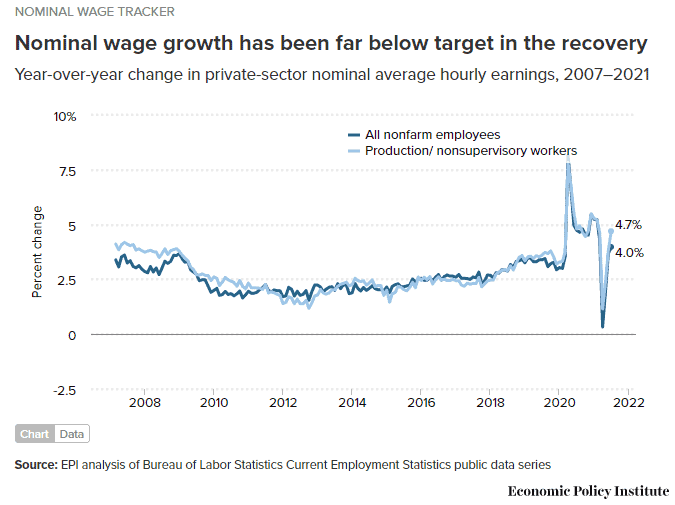Who would have thought coming out of the pandemic, companies would see a major challenge in staffing as they pursue a rebound back to normalcy and pursuit of new growth targets? The country, and the world for that matter, is maneuvering through uncharted territories with a national labor shortage.
The Consumer Price Index (CPI) recently posted one of the highest numbers in decades, unemployment is only slightly above average levels at 5.4%, and the stock market is at all-time highs. What does this mean for strategy leaders in corporate America? Capital is still cheap, expenses are going up, and companies with elastic products can increase prices with demand. However, without the necessary staffing resources to support the operation, companies are struggling to reach the seemingly low-hanging fruit.
Why is there a national labor shortage?
To me, it is simple. A family of four has received $11,400 in stimulus money. This increased their savings rate during the pandemic by close to 20%. There is an additional potential for collecting enhanced unemployment benefits which compound their earning potential to levels beyond their pre-pandemic earnings. Let’s not forget that during the pandemic, many of the industries which were non-essential, became unavailable. No vacations, fewer dinners out, and even a pause to clubs and sports meant extra savings in the bank accounts of so many.
What can hiring managers do about the national labor shortage?
First, you must understand how much an employee is worth. In the event that a candidate becomes aware of an opening and interested, a hiring manager likely has one chance to deliver an offer that earns an “accept” before that candidate disappears to the competition. So, what is new or different about this assessment? Well, many of the variables in this formula are new or unknown. On top of that, time is of the essence. Companies must listen to the market instead of trying to concentrate only on internal P&L calculations. The bottom line is that a company that is able to secure staffing will continue a growth operation.

In today’s pandemic rebound hiring climate, more operators mean more operation. Of course, an increased capability to grow operational capacity means more revenue. But let’s also not forget about the baseline, current employees. Maintaining employee satisfaction is essential to protecting the baseline operational capacity along with the company’s reputation. Expect potential new hires to do their homework and ask around. Get feedback about the importance of benefits, overtime, work-life balance, and career advancement; then act on it! Prove to the employees that the company values them and intends to show that by demonstrating a relationship of mutual loyalty. This will take action.
Three ways to attract and retain employees:
- Increase Pay – In areas where the hiring efforts have proven difficult, conduct monthly market compensation assessments comparing your rates with your competition. The qualified talent pool is smart enough to realized that they currently have the leverage to seek increased compensation. Don’t be afraid of the increased operational cost. Instead, focus on how an increased operational capacity can drive increased revenue.
- Use technology to source candidates – Today, it is not as easy as posting a job and waiting for people to apply. In fact, a recent survey of 200 newly hiring transportation professionals showed that 84% learning about the opportunity through a recruiting or sourcing service who engaged them directly or through advertising. Many of the individuals were not actively job hunting because they didn’t have to be! Inflection Poynt does this through various platforms including social media and our proprietary Smart Sourcing Software which targets the right audience fast and effectively.
- Be creative – We work with some very clever companies. One of our clients recently told us they are giving hourly operators a dollar per hour raise for any employee with good attendance for 90 consecutive days. Another client negotiated a discount with one of their customers (in food service) which allowed them to provide free lunch a couple days a week. Maybe incentivizing attendance with a quarterly stock award could be a good approach. Ultimately, the point is to think outside the box and even get input from your employees on what the company can do to make their efforts more satisfying.

A very talented pool of future employees is currently considering their options. Make sure that you seek them out and show them that opportunities at your organization are the clear best choice. The national labor shortage may not be going away soon, but you can be prepared by taking action. If you can get ahead of the national labor shortage by paying employees more, using smart sourcing methods, or being creative your business unit will have advantages over competitors.



